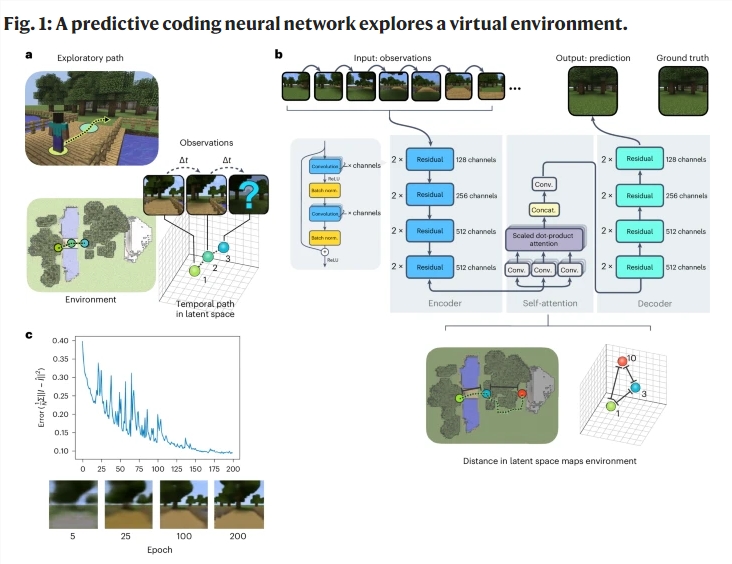The field of artificial intelligence has made impressive progress, especially in machine vision and environmental cognition. Scientists have been working hard to enable machines to understand and perceive the world like humans. This article will introduce the latest research published in the magazine "Nature Machine Intelligence". This research uses visual predictive coding technology to successfully enable machines to automatically build cognitive maps, simulate human visual perception processes, and bring benefits to the development of artificial intelligence. new breakthroughs and possibilities.
In this era of rapid development of artificial intelligence, how machines understand and "see" the world has always been a hot research topic among scientists. Recently, a study published in the journal Nature Machine Intelligence revealed a brand-new method for us to automatically construct cognitive maps using visual predictive coding (visual predictive coding). This is not only a major breakthrough in the field of artificial intelligence, but also gives us a deeper understanding of how machines can simulate human visual perception.
In the brains of humans and other mammals, there is a special kind of neural representation—cognitive map. This inner neural structure helps us navigate, plan routes, and even construct a mental understanding of our surroundings. However, how this cognitive map is formed has been a mystery in the field of neuroscience.

At the heart of this research is a technology called visual predictive coding. Simply put, this is a way for machines to learn the structure of their environment by predicting future sensory input. In this way, machines are able to learn from past experiences and predict what might happen next.
The researchers simulated this process by building a neural network model. This model can automatically build a cognitive map of the environment from a single image with high accuracy and consistency. This is like equipping a machine with a "brain" so that it can understand and perceive the world like humans.
In order to verify the effectiveness of this method, the researchers conducted a series of experiments in a virtual environment. They built a simulated environment and let the machine explore and learn in this environment. It was found that the machine was not only able to accurately construct a cognitive map of the environment, but was also able to navigate effectively in complex scenes.
The results of this research bring unlimited possibilities to the field of artificial intelligence. In the future, we may be able to see more intelligent robots that can better understand human instructions and complete complex tasks more accurately. Whether in the home, healthcare, education or other fields, this technology will have huge potential.
With the deepening of this research, we have reason to believe that artificial intelligence will get closer and closer to human cognitive abilities. Machines will no longer simply execute commands, but will actually be able to understand, learn and adapt. This is not only a technological advancement, but also a profound exploration of the nature of intelligence by mankind.
Paper address: https://www.nature.com/articles/s42256-024-00863-1
This research has opened up a new path for the application of artificial intelligence in spatial cognition and navigation. In the future, it will greatly promote the development of robotics, autonomous driving and other fields, and deserves continued attention and in-depth research.